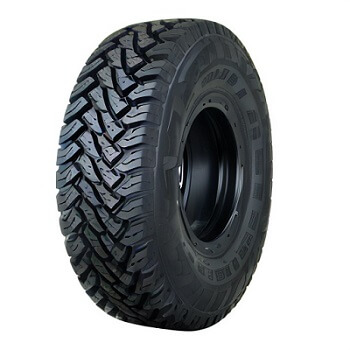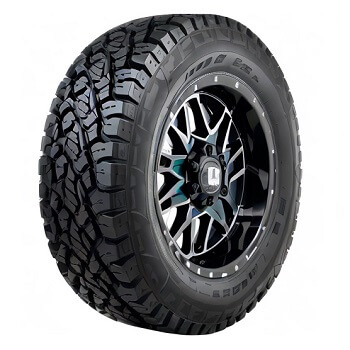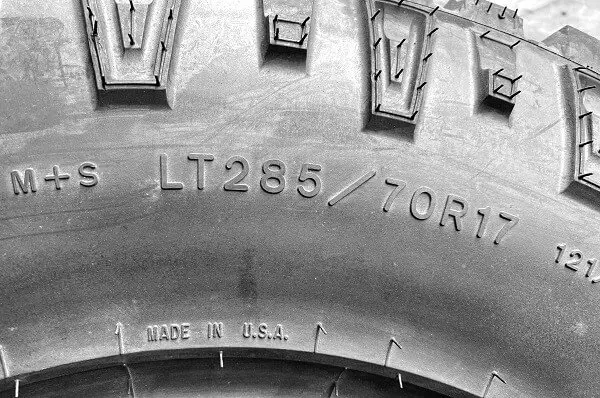Tire Size 285/75r16 vs 285/70r17

Are you considering swapping out your 285/75R16 tires for a set of 285/70R17s? While the difference may seem minor at first glance, understanding the implications of this change is crucial for your vehicle’s performance, safety, and your overall driving experience.
- The overall diameter difference is only 0.4%, which is within the acceptable range
- The sidewall height reduces by 0.56 inches (14.25 mm) or 6.7%
- On-road impacts may include slightly firmer ride and negligible fuel efficiency reduction
- Off-road effects include minimally reduced ground clearance but potentially improved traction
285/75r16 vs 285/70r17
This table provides a clear and concise overview of the differences, making it easy for you to understand at a glance.

Fitment Guide
The overall diameter of 285/75r16 tires is only 0.4% larger than 285/70r17 tires. This minor difference means 285/70r17 can directly replace 285/75r16 tires in most cases without clearance issues.
Replacement tires should be within 3% of the original size to avoid rubbing or speedometer inaccuracies. The 0.4% difference between these sizes is well within this guideline.
Ground Clearance
The extra 0.56 inch of sidewall height with 285/75r16 tires provides slightly more ground clearance compared to 285/70r17.
This added clearance can help prevent scrapes and damage when driving over obstacles or rough terrain. However, the larger 285/75r16 diameter also causes a lower speedometer reading than 285/70r17.

Gas Mileage
The 285/70r17 tire, with its slightly smaller diameter and lower profile, offers a minor improvement in gas mileage over 285/75r16.
The shorter sidewall profile and reduced rotational mass lower rolling resistance. This contributes to efficiency and fuel economy, which is beneficial for daily driving.
Ride Comfort
The taller 75 aspect ratio sidewall of the 285/75r16 tire absorbs more shock over uneven roads and bumps.
This provides a more comfortable ride compared to the shorter 70 aspect ratio of the 285/70r17. The extra sidewall flex smooths out imperfections in the road.
Aesthetics
Visually, the difference between these two sizes is subtle. The 285/75r16 will have a slightly taller sidewall, giving it a more prominent profile compared to the lower-profile appearance of the 285/70r17. This stretched look suits trucks, and SUVs benefit from a bit more sidewall.

Handling & Stability
The 285/70r17 offers a slightly sharper handling response and better stability at higher speeds thanks to its shorter, stiffer sidewall.
This allows the tread to maintain optimal contact with the road surface during cornering. The taller 75 aspect ratio of the 285/75r16 has more flex, reducing handling precision somewhat.
Noise & Vibration
The lower profile 285/70r17 transmits more road noise and vibration into the cabin due to its stiffer sidewall.
The extra cushioning of the taller 285/75r16 sidewall dampens noise and vibration, providing a slightly smoother and quieter ride. However, both sizes isolate noise and vibration well.
Durability & Wear
The wear and durability of these two sizes is very comparable. The shorter sidewall of the 285/70r17 promotes even treadwear, while the extra flex of the 285/75r16 distributes stress evenly across the tire structure. Both offer long tread life and durability.

Adverse Conditions
Both tires perform well across rain, snow, and mild off-road conditions. The extra ground clearance of the 285/75r16 is an advantage over obstacles, while the shorter sidewall of the 285/70r17 provides responsive handling on slippery roads. Overall traction is comparable.
Speedometer Reading
The speedometer reads 0.4% lower with the slightly larger diameter 285/70r16 tires than 285/75r17. This is a minor discrepancy that does not require speedometer recalibration.
At an actual speed of 20 mph, the speedometer would read 19.93 mph with 285/70r16 tires versus 20 mph with 285/75r17 tires.
What Does 285/75r16 Mean?
The first number, “285,” refers to the Tire’s width in millimeters. The second number, “75,” is the aspect ratio, which is the height of the tire sidewall as a percentage of the width.
The “r” in this case stands for “radial,” which is the type of tire construction. The last number, “16,” is the wheel diameter in inches.

What Does 285/70r17 Mean?
The first number, “285,” still refers to the width of the Tire in millimeters. The second number, “70,” is still the aspect ratio, but it is a lower percentage than the 75 in the other size.
This means that the Tire’s sidewall will be shorter than the width. The “r” still stands for radial, and the “17” is the wheel diameter in inches. Again, this is a standard size for many vehicles.
What is the Difference Between 285/75r16 and 285/70r17?
The primary difference between 285/75R16 and 285/70R17 tires lies in their sidewall height, with the 285/70R17 being 0.56 inches (14.25 mm) shorter than the 285/75R16 tire size.
Can I Use 285/70r17 Instead of 285/75r16?
Yes, you can use 285/70R17 tires instead of 285/75R16 because the diameter difference is only 0.4%, which falls within the acceptable range of +/- 3%. However, you may experience minor changes in ride comfort, fuel efficiency, and off-road performance.
How Much Taller is a 285/75r16 Tire Than a 285/70r17?
A 285/75R16 tire is 0.12 inches (3.1 mm) taller than a 285/70R17 tire. This height difference is primarily due to the 0.56-inch (14.25 mm) reduction in sidewall height when moving from the 75 aspect ratio to the 70 aspect ratio.
Our Observations
After carefully analyzing the differences between 285/75R16 and 285/70R17 tires, we’ve concluded that the impact of switching sizes is relatively minor in most aspects. The 0.4% difference in diameter falls well within the acceptable range, meaning that the change is unlikely to cause any significant issues with vehicle performance or safety.
On the road, you may notice a slightly firmer ride and a minimal decrease in fuel efficiency, but these effects are likely to be negligible in everyday driving.
Off-road, the shorter sidewall of the 285/70R17 tires may provide enhanced traction and steering precision, but at the cost of a small reduction in ground clearance and potentially increased vulnerability to sidewall damage.
Ultimately, the decision to switch from 285/75R16 to 285/70R17 tires depends on your specific needs, driving style, and personal preferences.
If you’re seeking a moderately firmer ride and a slightly more aggressive look, the 285/70R17 tires may be a good choice. However, if you prioritize a softer ride and maximum sidewall protection for off-road adventures, sticking with the 285/75R16 tires may be the better option.

Meet Caitlin McCormack, a Tire Size Expert and Blogger Passionate About Everything Related to Tires. With Years of Experience in the Tire Industry, Caitlin Has Become an Expert in Tire Sizes and Their Impact on Vehicle Performance.
